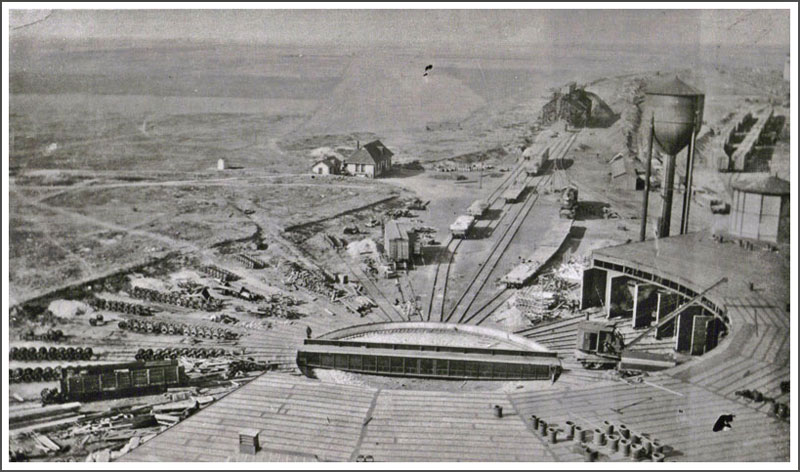|
The Roundhouse – A
Service Station for Trains

As a divisional point of the new Grand Trunk Pacific, the town of
Rivers underwent a considerable building boom as the GTP began the
construction of buildings to service the many locomotives that would be
passing through. By 1909 up to 300 people were employed in railway
operations.
As simple as their designs were, engines needed regular maintenance.
Boilers needed special attention and occasionally had to be re-built.
Catastophic explosions could occur in a faulty boiler.
The most important and unique structure was the Roundhouse.
Roundhouses or Engine Houses are large, circular or semicircular
structures that were traditionally located surrounding or adjacent the
tracks. They are maintenance and repair shops for locomotives. Along
with the adjacent coal dock and water tower they were Service Stations
for trains.
The defining feature of the traditional roundhouse was the turntable.
The main structure was a series of stalls, arranged in a semi-circle.
Each stall was connected by a track to the edge of the turntable. The
turntable allowed a locomotive or other rolling stock to be directed
towards the proper stall and turned around for the return journey when
the work was done.
How else would you turn and park five tonnes of steel?

Some
250 to 300 men were employed in Rivers during the early railroad
operations at this point. Pictured here are some members of the machine
department.
These unique and indispensible buildings became obsolete as diesel
engines replaced steam power. These new engines required much less
local maintenance. Rivers building remained a vital part of the
railroad operation until the 1950’s and was torn down in 1962.
|